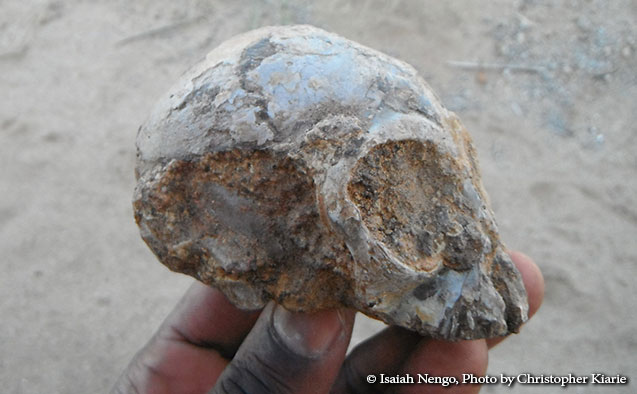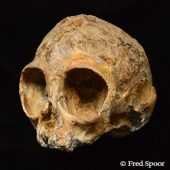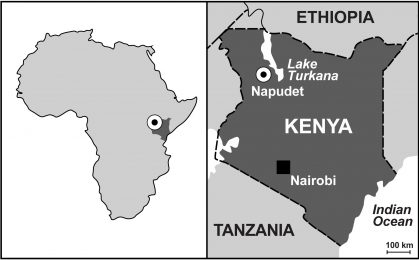13-million-year old fossil skull sheds light on ape ancestry

Wake Forest University Professor of Anthropology Ellen Miller is working with an international team of researchers who discovered a 13-million-year-old fossil ape skull in Kenya that sheds light on ape ancestry.
Their findings will be published in the scientific journal, Nature, on Aug. 10. The research team was led by Isaiah Nengo of Stony Brook University-affiliated Turkana Basin Institute, Stony Brook University and De Anza College.
“This is right at the time and place to teach us so much about where living apes came from and what their initial adaptations were,” said Miller, one of several co-authors of the study.
“It is truly a touchstone for all future studies on primate evolution and growth and development in apes.” Ellen Miller, professor of anthropology
The lemon-sized fossil, assigned to a new species – Nyanzapithecus alesi – on the basis of the unerupted permanent teeth in its jaw, fills a gap in the fossil record. For analysis, the team used an extremely sensitive form of 3D X-ray imaging at the European Synchrotron Radiation facility in Grenoble, France.
We don’t have any fossil ape skulls from between 17- and 7-million-years-old, only jaws and teeth, said Miller, a paleoanthropologist who has spent decades studying the fossil evidence for primate and human evolution. “Having a complete skull means we can know what fossil group Alesi belongs to. The cranium has fully developed bony ear tubes, an important feature linking it with living apes.”
The characteristics of the inner ear indicate how it moved in the trees and its teeth tell about its diet, she said.
“It is amazing all the things we can know from this skull and it fits in the palm of a hand.”
Read the full story from the Leakey Foundation.
The work was supported by: The Leakey Foundation and trustee Gordon Getty, the Foothill De Anza Foundation, the Fulbright Scholars Program, the National Geographic Society, the European Synchrotron Radiation Facility and the Max Planck Society.
 Listen to 88.5 WFDD reporter Keri Brown’s radio interview with Miller.
Listen to 88.5 WFDD reporter Keri Brown’s radio interview with Miller.
“Finding Alesi is just the beginning. Think about future research and what younger scientists can do as we have access to more technology.”
Publication: Nengo, I., Tafforeau, P.,Gilbert, C.C.,Fleagle, J.G.., Miller, E.R.,Feibel, C.,Fox, D., Feinberg, J.,Pugh, K.D., Berruyer, C.,Mana, S., Engle, Z.and Spoor, F. New infant cranium from the African Miocene sheds light on ape evolution. Nature 10 August 2017.
Categories: Research & Discovery
Wake Forest News
336.758.5237
media@wfu.edu
Meet the News Team
Headlines
Wake Forest in the News
Wake Forest regularly appears in media outlets around the world.






